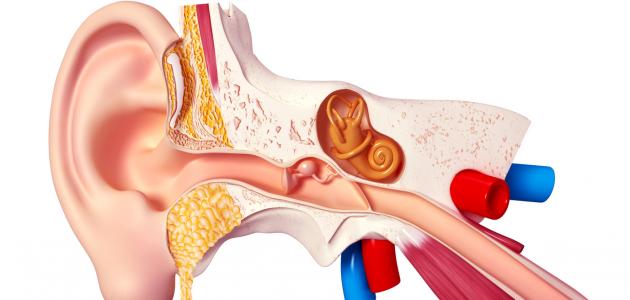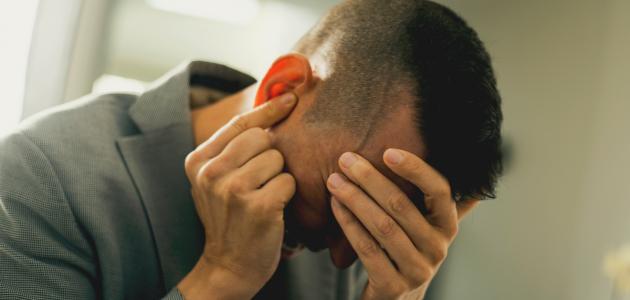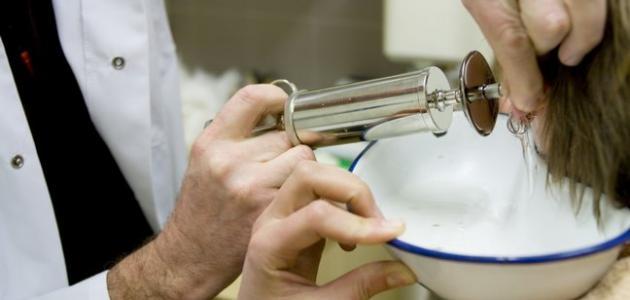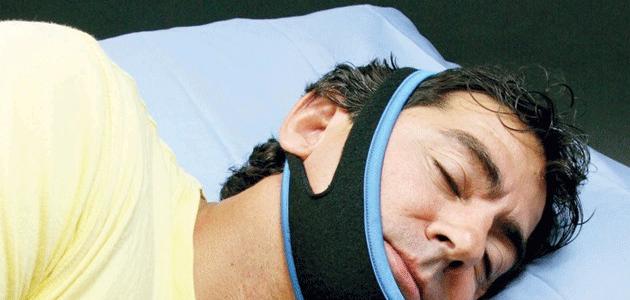Perforated eardrum
Perforated eardrum, or ruptured eardrum (in English: Ruptured Eardrum), or perforated eardrum, which means a tear in the tympanic membrane (in English: Tympanic Membrane), which is composed of tissue similar to skin tissue, which represents a thin membrane separating the outer ear (in English: Outer Ear). ) and the middle ear (in English: Middle Ear), and the function of this membrane is represented by two tasks: The first is to sense vibratory sound waves and convert the vibration into nerve messages that transmit the sound to the brain. The other is to protect the middle ear from foreign bodies, water, and bacteria. Although the middle ear has a sterile and clean environment, a ruptured eardrum may allow bacteria to enter it. Causing an infection known as otitis media.
It is worth noting that eardrum rupture is more common in children, and according to a study published by “The Journal of Laryngology & Otology,” the percentage of children with acute otitis media who suffer from eardrum rupture is about 29.5%, and the increased rate of eardrum rupture was associated with the presence of History and medical history of otitis media. The location of the perforation in the eardrum varies from one case to another. The percentage of patients whose eardrum perforation was located in the anterior-lower quadrant was about 85%, and for the remaining percentage of them the perforation was located in the upper-posterior quadrant of the membrane. The rate of closure of the perforation within one month was about 94% within a gradual recovery process followed by an increase in blood flow. Fluid in the middle ear, which is scientifically known as middle ear effusion, for some time before the ear regains its ability to breathe.
Read also:What causes ear pressure?
Symptoms of perforated eardrum
There are many symptoms and signs of a perforated eardrum that a person with this condition may suffer from, and the most prominent of these symptoms are the following:
- Severe toothache, which may go away suddenly.
- Loss of hearing in the affected ear.
- Fluid coming out of the ear that may contain blood.
- Buzzing, or ringing in the ear.
- Sensation of ear blockage.
- Dizziness and loss of balance.
- nausea;
- Hearing a whistling sound in the ear when blowing the nose.
Causes of eardrum perforation
Many factors cause eardrum perforation, the most prominent of which are the following:
- Inflammation of the middle ear, which results from the accumulation of fluids within the middle ear. These fluids, in turn, create pressure on the tympanic membrane, leading to its rupture.
- Barotrauma (in English: Barotrauma), which is a state of imbalance between the air pressure in the middle ear and the external air pressure, which causes stress inside the ear. If the pressure imbalance is severe, it may cause the eardrum to rupture. Barotrauma is linked to several factors; Among them is a sudden change in pressure, which may occur during air travel, or barotrauma may occur as a result of diving or exposure to a direct blow to the ear, as is the case with an air bag in a car.
- Exposure to acoustic shock; Which may occur as a result of hearing the sounds of explosions, gunshots, or any loud sound that includes a strong sound wave, which may cause eardrum perforation in rare cases.
- The entry of foreign and small objects into the ear; Such as cotton or hairpins, which can puncture the eardrum.
- Suffering from a severe head injury; Such as a fracture of the base of the skull, or dislocation and damage to the structures of the inner and middle ear, all of which lead to a perforation of the eardrum.
Read also:Getting rid of sinuses
Risk factors for eardrum perforation
There are a group of factors that may increase the risk of eardrum perforation, the most prominent of which are the following:
- Ear infection.
- Medical history including previous eardrum perforation or ear surgery; Such as ear tube surgery.
- Practice diving in water.
- Ear injury.
- Inserting foreign bodies into the ear.
Diagnosis of eardrum perforation
A perforated eardrum is diagnosed by a general practitioner or an ear, nose and throat specialist, using an otoscope or lighted microscope that is placed inside the ear so that the doctor can look through it and detect the presence of a perforation in the eardrum. The doctor can conduct further tests to help diagnose Ear problems, or searching for the cause of the symptoms that the individual is complaining of, or detecting the occurrence of hearing loss. These tests include the following:
- Laboratory tests: It is used if there are secretions and fluids in the ear, so that a sample of it is subjected to culture or laboratory examination in order to detect the presence of a bacterial infection in the middle ear.
- Tuning fork test: (In English: Tuning Fork Evaluation), this test uses two-pronged metal tools that emit sounds when struck. The aim of conducting this test is to ensure the efficiency of the sense of hearing and to detect hearing loss and its cause. Whether it is caused by damage to the vibrating parts of the middle ear, such as the eardrum, or by damage to the sensors and nerves in the inner ear, or by both.
- Tympanometric test: (In English: Tympanometry), the principle of this test is based on measuring the response of the eardrum to slight changes in air pressure by inserting a device into the ear canal to achieve this purpose, so that response patterns are tracked, and certain patterns of response may indicate the presence of a perforation in the eardrum. If it appears.
- Hearing test: (English: Audiology Exam), which is a series of carefully controlled tests, which are conducted in a soundproof booth, to measure the ability to hear sound at different volumes and degrees.
Read also:Inner ear infection
Treatment of eardrum perforation
In most cases of eardrum perforation, recovery is achieved within a few weeks of the injury without the need for treatment. Sometimes the doctor may prescribe antibiotic drops if there is evidence of an infection. However, if the eardrum perforation does not heal on its own, Resorting to other treatment methods, which include the following:
- Eardrum patch: (English: Eardrum Patch), which is made of paper or other materials; The ear, nose and throat specialist applies a chemical substance to the edges of the hole in order to promote healing, then places the patch over the hole and closes it. Sometimes this procedure may need to be repeated more than once before the hole closes completely. It is worth mentioning that this procedure is done Inside the doctor's office.
- surgery: (in English: Surgery), and the most common surgical procedure is known as tympanoplasty (in English: Tympanoplasty); In it, a patch of body tissue is prepared to close the hole in the eardrum, and it is used if the patch fails to treat the hole in the eardrum, or if the doctor acknowledges the difficulty of healing the hole using the patch. This procedure is usually done in the doctor’s office, unless there is anesthesia that requires the patient to stay. in the hospital.
Effects of eardrum perforation
Perforation of the eardrum causes negative effects on the health of the ear and the integrity of the sense of hearing. These effects can be stated as follows:
- Hearing problems occur. Because the eardrum plays a role in enabling the sense of hearing, its damage causes problems that usually go away when the hole heals.
- Infection and bacterial inflammation that may affect the middle ear in the event of a perforated eardrum, as the eardrum plays an important role in protecting the inner ear and preventing the entry of water, bacteria, and pollutants, as we mentioned previously. If the infection occurs and worsens to become chronic, this affects the sense of hearing and may cause Long-term hearing loss, or permanent hearing loss in some cases.
- Cholesteatoma, which is the growth of a skin cyst inside the ear that occurs as a result of the transfer of waste from the ear canal into the middle ear. As it continues to grow, this cyst can cause damage to the middle ear bones and cause serious problems.
Preventing eardrum perforation
There are a number of tips and recommendations that can be followed to maintain the health of the ear and protect it from tearing and damage. The most prominent of these tips are the following:
- Be aware of the nature of the symptoms and signs associated with otitis media, with the aim of obtaining immediate care in the event of an infection, and preventing damage to the eardrum. These symptoms include: ear pain, high temperature, nasal congestion, poor hearing, and refusal to eat food. children.
- Protecting the ear while flying or passing through areas with different pressures, as it is recommended to postpone air travel in the event of colds or allergies that cause nasal or ear congestion. It is also possible to use techniques that enable the pressure difference to be resisted during take-off and landing; Such as using pressure-neutralizing earplugs, chewing gum, yawning, avoiding sleep, or resorting to the Valsalva Maneuver, which means gently exhaling through the nose while pressing it and closing the mouth.
- Avoid using tools and foreign objects in an attempt to clean the ear and remove excess wax. This includes using cotton, a paper clip, or a hairpin. It is necessary to monitor children and inform them of the danger of using these tools, which can cause a perforated eardrum.
- Protect the ears from exposure to loud noises that cause damage to them, and use protective earplugs or ear covers if exposed to this while working or engaging in activities.









